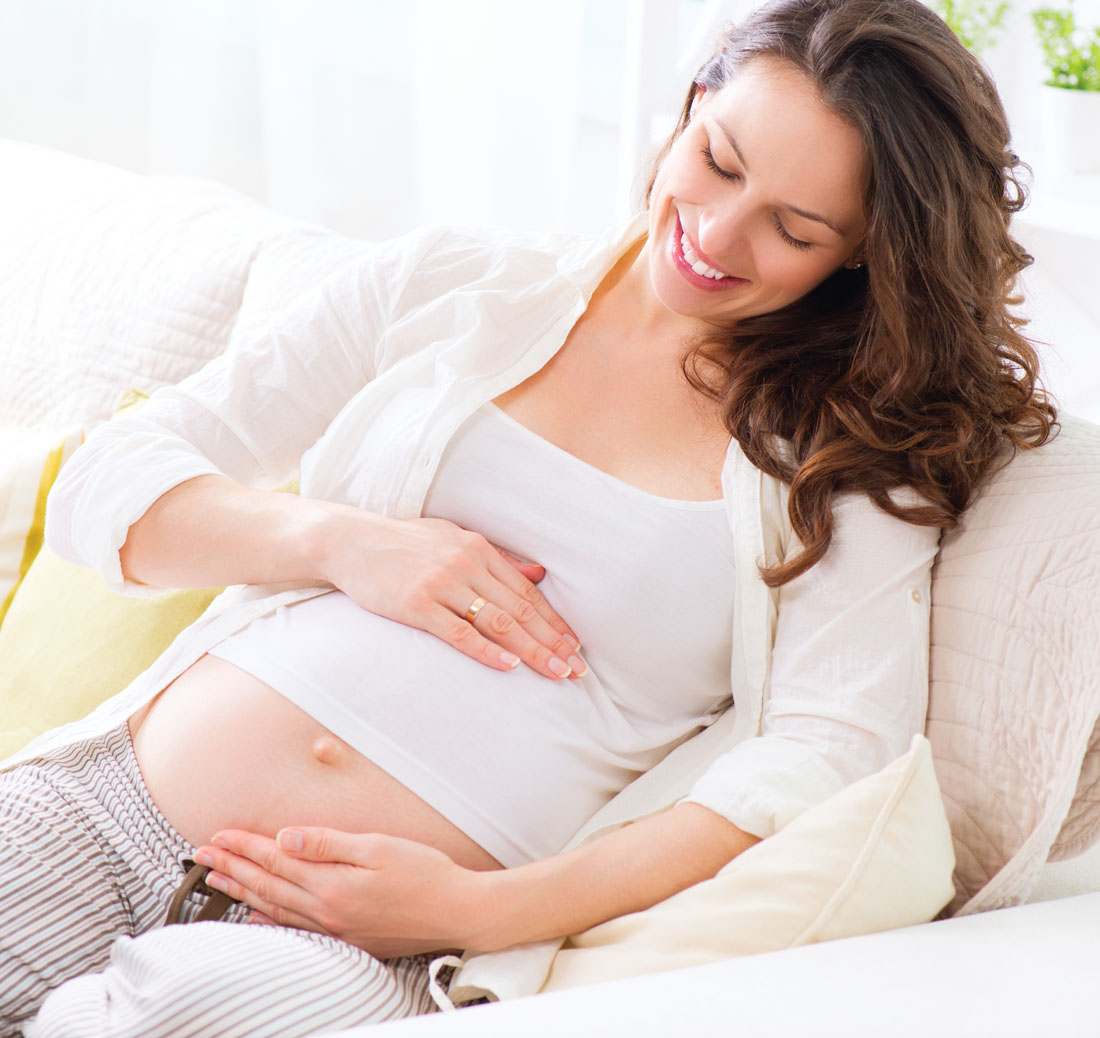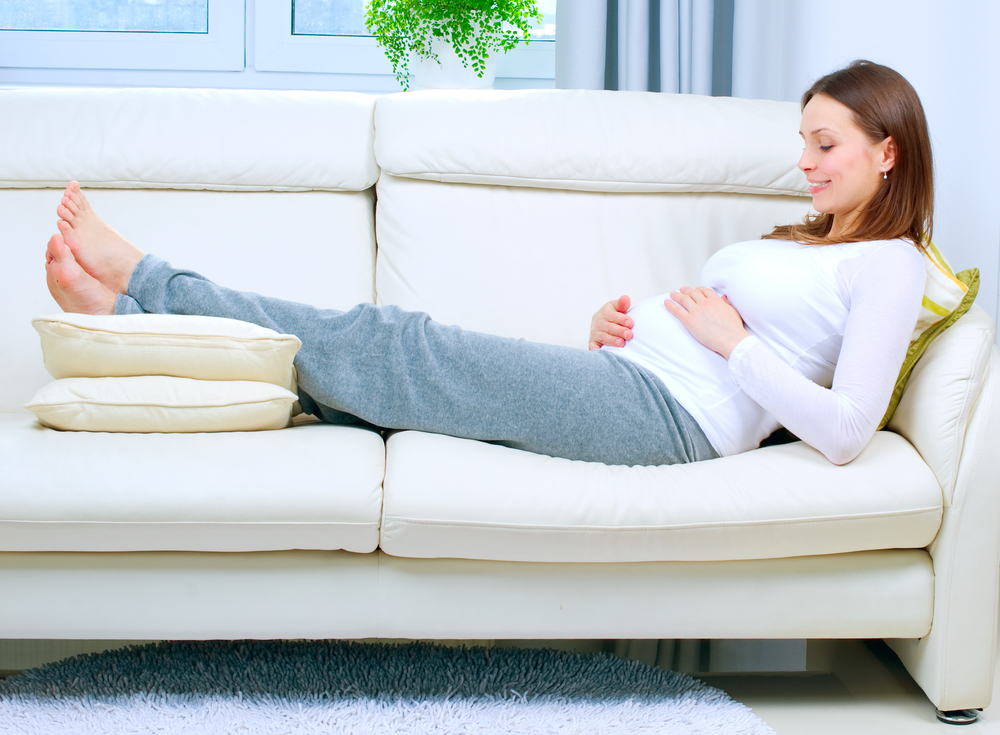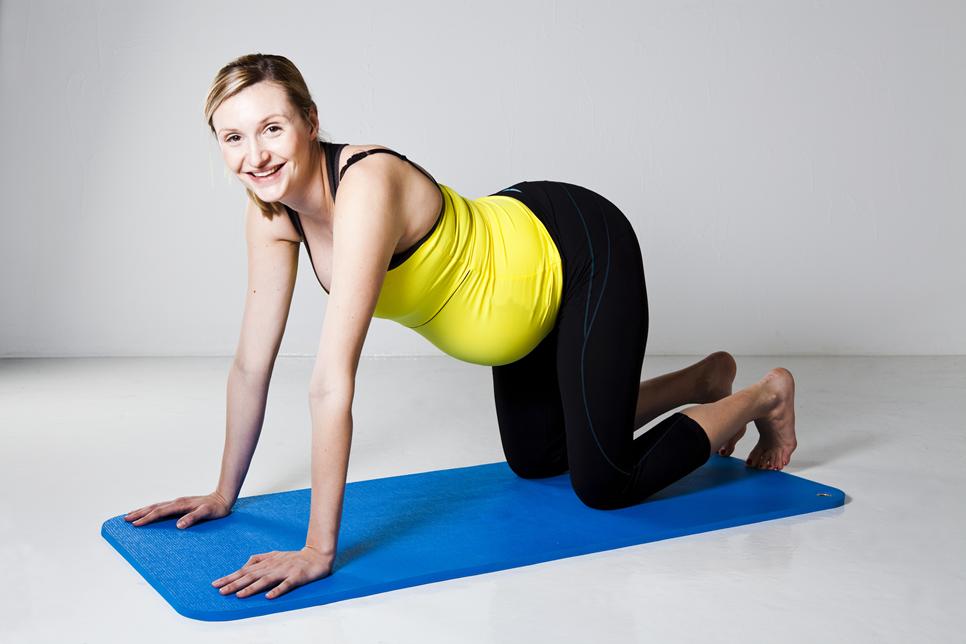Throughout pregnancy, your growing and changing shape makes it important to alter the way you perform a number of everyday tasks and movements.

The most obvious sign of advancing pregnancy is the change in your shape. The placenta produces a hormone called relaxin that makes the joints of the spine and pelvis more flexible in preparation for birth. The allows your center of gravity to shift as your uterus grows and becomes heavier, thrusting your abdomen forward. Your chest pushes forward as well, and your bottom tends to trust outward to help you to balance. Because of this, the small of your back takes a good deal of additional stress, which can lead to slouching and backache.
Take steps to strengthen your back so that it is able to tolerate the extra pressure put on it. If your spine was not well aligned before you become pregnant, the chances of backache during pregnancy are increased.
Adjusting the way you stand, sit, lie, and move can reduce discomfort, avoid chronic aching, and prevent some long – term problems. Experiment with what is most comfortable. It may take you some time to adopt new, more supportive postures, but they should eventually become automatic.
Standing
You can learn to recognize good posture and strengthen your back by standing with your back against a wall. Your shoulders and buttocks should touch it.
Changes in your spine
To compensation for your altered center of gravity, your spine’s normal curves are exaggerated; backward at the chest and forward in the lumber region to balance the weight of your abdomen.
Keeping your shoulders relaxed; try to touch the wall with the small of your back. You will feel your bottom tucking in as a result, and your spine will straighten. Now walk away from the wall and relax a little so that you aren’t so rigid. Whenever you have to stand, try to re-create this relaxed but upright posture.
Sitting

You will feel more comfortable and protect your back if you sit with your spine well supported. In later pregnancy, a small pillow tucked into the small of your back will help. If your job involves sitting at a desk or in one position for a long time, roll your shoulders one way and then the other to relaxes tension. If possible, sit in a high – backed chair that supports your upper back. At home, sitting on the floor with your back against the wall strengthens the spine and combats a tendency to slouch.
Lying Down
If won’t hurt your baby if you lie on your stomach all the way through pregnancy, but most women find that this becomes increasingly uncomfortable as pregnancy progress. Lying on your stomach can also lead to backache if you have a very soft mattress that allows your abdomen to sink into the bed and your back to arch. Instead, try lying on your side, with your upper leg drawn up. You might like to place a pillow between your legs, under your upper knee. If you prefer to lie on your back, make sure your head is supported with one or two pillows. Some doctors recommended that you do not lie on your back after about 20 weeks, because the pressure of the uterus on major blood vessels can decrease blood flow to the uterus.
Lifting
To avoid pain and injury when picking something up, use your legs instead of your back. Bend at the knees and then lift. You should feel the strain in your thighs, not your back. If you need to bend to carry out a task –making a bed or dressing a toddler, for example – kneel on the floor or take a squatting position.
Ah ! my back aches …….
Backache if one of the most common afflictions during pregnancy. Paying attention to your posture will help you to avoid aches and pains and can relieve any aches that have already started.
Practice these exercises regularly to get relief from back ache .

- Pelvic Rock Get down on all fours, with your arms straight and your back level; imagine that you are balancing a tray on your back. Then tip the try off by of contracting your abdominal muscles, tucking in your bottom, and pushing the small of your back upward .Flatten your back again and repeat six to eight times. Hold each position for five seconds.
- Stand facing as wall with one foot in front of the other. With your arms folded and elbows touching the wall, lean forward and rest your head on your arms. Tuck your bottom in. Hold for a count of five, then straighten up. Repeat six to eight times. Repeat with the other foot forward.
- Rolling each shoulder forward five times, then back five times can relieve pain in the upper back. (Heavy breasts can add to back-ache – make sure that your bra provides enough support)
- Waist Rotation Stand with your hands on the waist, feet about a shoulder width apart. Bend forward slightly from the waist and rotate upper body several times clockwise and then several times from counter-clockwise. Keep hips stationary.
- Hip Rotation same starting position as waist rotation. This time, keep upper body as stationary as possible and rotate hips several times clockwise and then anti-clockwise.
Childbirth is a major life event for a woman, and exercise in pregnancy helps prepare for the challenge of this event and for parenthood.
Related Links
- A Complete Body Workout for Pregnant Women (Part I).
- A Complete Body Workout for Pregnant Women (Part II).
- Pregnancy and Exercise.
Disclaimer
The Content is not intended to be a substitute for professional medical advice, diagnosis, or treatment. Always seek the advice of your physician or other qualified health provider with any questions you may have regarding a medical condition.

